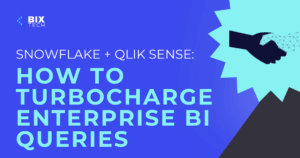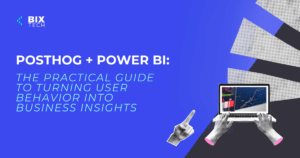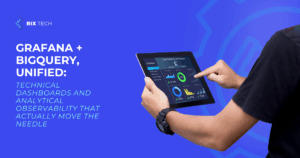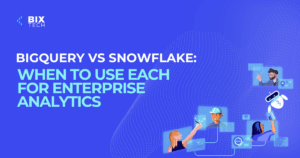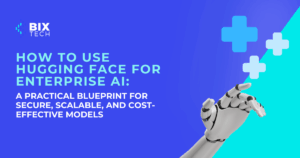Mastering Retrieval-Augmented Generation (RAG): The Hottest Innovation in Software Development

Sales Development Representative and excited about connecting people
Software development is evolving at a breathtaking pace. Among the most exciting advances, Retrieval-Augmented Generation (RAG) stands out as a transformative approach, especially for building intelligent applications that demand both up-to-date knowledge and the power of large language models (LLMs). If you’re a developer, architect, or tech leader aiming to stay ahead, understanding RAG is quickly becoming essential.
In this deep dive, we’ll unravel what RAG is, how it works technically, and why it’s rapidly gaining traction in production systems across industries. We’ll also look at best practices, practical implementation insights, and how you can leverage RAG for real-world business impact.
What Is Retrieval-Augmented Generation?
Retrieval-Augmented Generation is an architecture that combines the generative power of LLMs (like GPT-4 or Llama) with the precision of real-time information retrieval. RAG models do not rely solely on their internal, static training data. Instead, when given a user query, they search external data sources (documents, databases, APIs) for relevant context, then generate a response based on both the prompt and the retrieved information.
This hybrid approach addresses two major pain points:
- LLMs’ Knowledge Cutoff: Traditional LLMs cannot access information published after their training date.
- Hallucination: LLMs sometimes generate plausible but incorrect answers due to lack of grounding in real data.
By retrieving authoritative context on demand, RAG can provide more accurate, up-to-date, and trustworthy responses.
How Does RAG Work? Technical Deep Dive
Let’s break down the RAG workflow step by step:
1. Query Processing
When a user submits a question, the system first encodes the query into a vector representation using a pre-trained embedding model (often the same or similar to the LLM’s encoder).
2. Retrieval Layer
This vectorized query is used to search a vector database (such as Pinecone, FAISS, or Elasticsearch) containing indexed representations of your external knowledge base. The system retrieves the top N most relevant documents, paragraphs, or data chunks.
3. Context Assembly
The retrieved contexts are compiled, sometimes summarized or filtered, to fit within the LLM’s context window. This is a crucial step: too much irrelevant data can confuse the LLM, while too little context may miss key details.
4. Augmented Generation
The LLM receives the original query plus the retrieved context in its prompt. It then generates a response, grounding its answer in both its internal knowledge and the fresh, retrieved data.
5. Optional: Feedback Loop
Some advanced implementations use user feedback, retrieval scores, or external validation to iteratively improve both the retrieval and generation components.
Pro tip: Keeping your vector database updated and your embeddings relevant is key to RAG’s ongoing performance.
Key Technical Components and Best Practices
Vector Databases & Embedding Models
- Choice of Embedding Model: Strong semantic search depends on high-quality embeddings. OpenAI, Cohere, and open-source models (like SentenceTransformers) are popular options.
- Efficient Indexing: For large document sets, use Approximate Nearest Neighbor (ANN) algorithms for fast retrieval.
- Chunking Strategy: Documents should be split into logical, retrievable chunks (e.g., paragraphs, sections) rather than whole files.
Prompt Engineering
- Context Injection: Properly formatting the prompt to include retrieved snippets is vital. Use clear delimiters and instructions to help the LLM focus on relevant evidence.
- Context Window Management: Watch for token limits in your LLM; too much context can lead to truncation or degraded performance.
Data Pipeline & Freshness
- Automated Sync: Set up pipelines that regularly ingest and re-index new data into your vector store to keep responses current.
- Source Diversity: RAG can pull from PDFs, webpages, databases, and APIs. The more diverse and clean your sources, the more robust your system.
Evaluation & Monitoring
- Groundedness Metrics: Evaluate not only response fluency but also factual accuracy and correct citation of retrieved sources.
- Human-in-the-Loop: For high-stakes applications, consider workflows where humans review or approve LLM outputs.
Real-World Applications of RAG
RAG is already revolutionizing several domains:
- Enterprise Search: Employees can query internal wikis, documentation, and ticketing systems for precise, context-rich answers.
- Customer Support Bots: Chatbots provide real-time, personalized support by combining LLM power with the latest product docs and FAQs.
- Healthcare & Legal Tech: Professionals access up-to-date research, guidelines, or case law, with the LLM synthesizing complex information on the fly.
- Research Assistants: RAG-powered tools can summarize or answer questions about vast academic literature, even as new papers are published.
For a real-world case study on how RAG and advanced language models are empowering business applications, check out our in-depth guide to language models and their business impact.
Challenges and Advanced Techniques
No technology is without hurdles. Here are some challenges and advanced solutions:
- Data Privacy: When surfacing sensitive or proprietary information, RAG systems must enforce strict access controls and data governance. Learn more about data privacy in AI contexts.
- Latency: Real-time retrieval and generation can introduce delays. Optimize with caching, asynchronous retrieval, and efficient database queries.
- Source Quality: Garbage in, garbage out. Poorly curated knowledge bases can lead to misleading answers.
- Citation & Attribution: Advanced RAG systems can cite sources directly in their responses, boosting user trust and transparency.
Experimental Tip: Some teams are exploring multi-hop retrieval (where the system chains several retrieval steps) and hybrid retrieval (combining keyword and semantic search) for even richer answers.
Getting Started With RAG in Your Organization
Ready to try RAG? Here’s a streamlined roadmap:
- Define Your Use Case: What problem can RAG solve for your users—better customer support, smarter internal search, or something else?
- Curate Your Knowledge Sources: Gather, clean, and structure the data your system will retrieve from.
- Choose Your Tech Stack: Pick your LLM, embedding model, and vector database. Open-source and managed solutions abound.
- Build a Prototype: Start with a simple pipeline, then iterate. You can find practical guidance in our comprehensive RAG implementation guide.
- Evaluate and Improve: Use both human and automated evaluation to refine retrieval quality and generation accuracy.
The Future of RAG: Why Every Developer Should Care
Retrieval-Augmented Generation is more than a technical curiosity—it’s a paradigm shift in how software systems interact with information. As LLMs become ubiquitous, RAG enables them to stay relevant, trustworthy, and useful in real-world scenarios where knowledge changes fast.
Whether you’re building the next-gen enterprise assistant, a research platform, or an AI-powered product, mastering RAG will give you a competitive edge. The software development landscape is moving quickly—make sure you’re riding the wave, not chasing it.
Ready to unlock the next level of intelligent applications? Dive deeper and learn more about the business revolution driven by data science and AI.
Related Reading:




